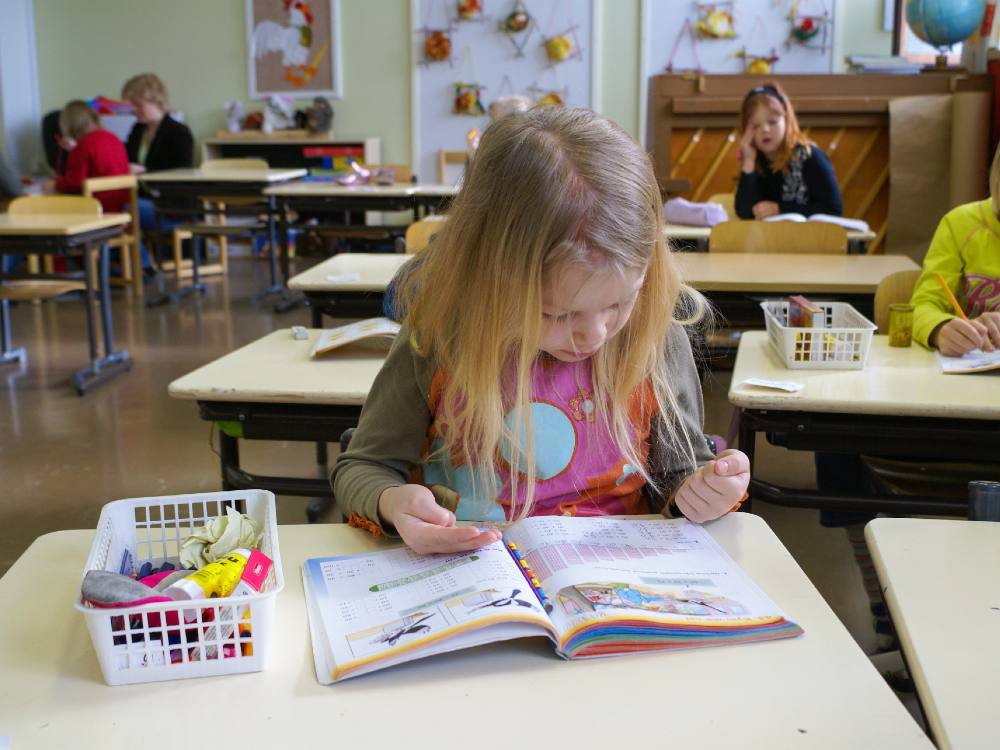I’m a retired college educator and a longtime admirer of Finland’s education system. I’ve been inspired by its emphasis on egalitarian principles, ensuring every child gets the same excellent instruction in every school.
So I was shocked to read the “bildung review” recently published by the Finnish Ministry of Education and Culture. It’s a major criticism of a system admired around the world, and it has implications for Canadian education as well.
While the final version of the review will be out in a few days, the English-language news release about the preliminary paper had plenty of alarming detail.
The key point: In 2000, Finnish students beat the world in the 2000 PISA exams, a widely accepted measure of student learning in countries around the world. But since then, the review said, Finnish students’ achievement levels have steadily worsened. Somehow, an egalitarian system taught by highly trained professionals had gone downhill for over 20 years.
As the news release put it:
Internationally speaking, the decline in achieved learning outcomes, which began in the early 2000s, has been exceptionally rapid, and the drop in reading and mathematics proficiency observed in several studies corresponds to the learning attained in one year — even two years, according to some research data.
Nevertheless, “Despite the notable decline, young people’s achieved learning outcomes are still good in international comparison, as indicated by many international assessments.” In the 2018 PISA exams, for example, Finland and Canada tied for sixth place in reading and science.
But the review also found widening gaps in achievement between rich and poor, and between girls and boys — with boys, as in so many countries, lagging behind the girls. PISA 2018 found immigrant kids in Canada reading at the same level as non-immigrants, regardless of socioeconomic status. Meanwhile Finland’s immigrant kids had the lowest reading scores in the Organisation for Economic Co-operation and Development or OECD.
In a supposedly egalitarian system, this was a serious failure.
The cost of moving back to the top
The responses to the recent shortcomings of Finland’s education system in the Finnish media tended to focus on the need for highly educated workers, and for the government after the April 2 elections to focus on bringing “Finland back to the top in learning outcomes.”
One observer said, “Immigration is having a negative impact on the track record of many schools.” When the anti-immigration Finns Party is currently polling better than the Social Democrats, that finding was very convenient for right-wing populists.
The bildung review also praised Finland’s 77,000 teachers, all of whom have master’s degrees or more: “The appreciation of the teaching profession has continued to increase for decades. The academic education of the profession and the improved international reputation of the Finnish education system seem to have significantly boosted the appreciation of class teachers in Finland.”
But what is the point of their postgraduate degrees, if less-educated Canadian teachers can match their Finnish colleagues’ results? And Finland exports its education practices to schools overseas; is it ethical to promote such practices when they’re getting worsening results at home?
The bildung review doesn’t even raise such questions, let alone answer them. But an email to Pasi Sahlberg, a longtime advocate for Finnish education, provoked a detailed analysis. Now a professor of educational leadership at the University of Melbourne, in Australia, Sahlberg is the author of Finnish Lessons, a landmark book on education, with Finland’s school system as a test case for excellence. Sahlberg was also involved in the gradual evolution of Finnish education leading up to the PISA 2000 exams.
“First,” he told The Tyee, “there is no doubt Finnish students (like most others in the OECD as well) have been declining as far as PISA subjects are concerned. Our domestic research and national assessments show that is the case, especially among adolescent boys. But there is no evidence that these declines started in the early 2000s as the review claims.”
Sahlberg dismissed the bildung review as lacking any new information or insights, using some dubious PISA data, and offering “‘recommendations’ that many of us made more than a decade ago.”
And its political purpose was clear: “It provides a shield for the current political leaders in the ministry by putting the blame for this miserable situation on others — or no one.”
Coasting on past success
In Sahlberg’s view, problems were emerging in the late 2000s, but successive governments simply coasted on the prestige of the first three PISA results that placed Finland on top. All of Finland’s governments during those years have been coalitions, usually including the Social Democrats, Centre Party, National Coalition Party and sometimes the Green League and Left Alliance. Since the 2008 global financial crisis, Sahlberg argues, Finnish governments have tended to cut education budgets heavily while dreaming of oil-rich Middle Eastern nations paying to import Finnish education methods.
As a result of years of budget cuts, teachers are in short supply in some areas. Helsinki is trying to attract special education teachers with a 1,000-euro bonus on signing, and another thousand after six months. Without them, children with special needs, including autism, will fall farther and farther behind.
Another knowledgeable observer is William Doyle, an American who went to Finland in 2015 as a Fulbright Scholar to study the school system and now lives in Helsinki. In an email he told The Tyee: “I am convinced that Finland is still the ‘best’ national school system, along with Estonia — best-trained teachers, fairly distributed resources, highest learning return for hours spent studying, free school meals and health support. But I am not surprised that learning outcomes are dropping. No one seems to know why.”
For first graders, iPads
Doyle is skeptical of the Finns’ rush to “digitalization.” He cites Helsinki schools that give first graders their own iPads “to learn Finnish at home.” In upper grades, “most everything is digital,” even though education and health authorities say kids should be limited to two hours of screen time daily.
“The unlimited and uncritical proliferation of 24-7 digital access down to very low ages has, in my opinion, contributed to the collapse of reading, especially among boys, the elimination of movement at recess, and an avalanche of classroom distractions, compounded by laptops handed out by schools at ages 12 or 13 with no filters or limits, laptops that are often being used as entertainment devices during class time without teachers knowing (screens face away),” Doyle says. “All of this hurts learning and displaces physical activity. It is rarely talked about here, despite a tidal wave of global research associating excessive screen time and excessive social media use among young people with a wide range of risks to mental health, physical health and lower academic achievement.”
“All that said,” he concludes, “it is still an inspiring system, but major reforms and debates are needed.”
Political drift and neglect
“Reforms and debates” made the Finnish education system one of the world’s most effective, and most egalitarian. Political drift and neglect seem to have curtailed the debates, and reforms like digitalization sound more like fads. In this, Finland is likely typical of many countries, including Canada.
The problem in such countries is that politicians are eager to associate themselves with new or improved social services like education and health care. But they are also reluctant to keep spending money on them, especially in times of financial stress.
Finland expects a recession this year. So does Canada. Losing the political will to support a key institution can cause long-term damage, both to the institution and to all the people it’s supposed to serve.
Many retired teachers well recall the Social Credit “restraint” era of the recessionary early 1980s in B.C., when school budgets dropped as interest rates rose and teachers were blamed for education’s real and imagined sins. Meanwhile, the Socreds started giving taxpayer dollars to private schools in 1977, making it easier for some parents to pull their kids out of the public system.
We’re seeing a similar process now in health care: after coasting on Tommy Douglas’s medicare for over a half century, we now face crowded emergency departments, exhausted and burned-out staff, and politicians’ increasing support for private, for-profit health care.
It’s a standard right-wing practice to underfund public services and then bring in the private sector. Better that, than raise taxes or borrow money to improve public services.
I hope the voters of Finland see through this stratagem before their April 2 election, and that they resume serious education debates and reforms soon thereafter.
A prescription for change
William Doyle offered The Tyee a prescription for improving Finnish education:
1. Stop spending money on unnecessary and unproven K-12 classroom technology, which means most of it. And minimize classroom and recess digital distractions.
2. Take the huge amount of money you'll save and launch a national campaign to encourage young people (and parents) to read paper books from age seven, and to apply healthy limits to screen time.
3. Hire many more special education teachers.
4. Hire many more physical education teachers. Make physical education classes three or four times per week instead of one or two. Unlike technology, physical activity is an intervention with solid evidence for improving academic achievement, well-being and mental and physical health.
5. Abandon “education export” in favour of positioning Finland as an “education exchange” partner for all nations to learn from each other and search for best practices together.
Such measures might work very well here in B.C. too. ![]()
Read more: Education
















Tyee Commenting Guidelines
Comments that violate guidelines risk being deleted, and violations may result in a temporary or permanent user ban. Maintain the spirit of good conversation to stay in the discussion.
*Please note The Tyee is not a forum for spreading misinformation about COVID-19, denying its existence or minimizing its risk to public health.
Do:
Do not: